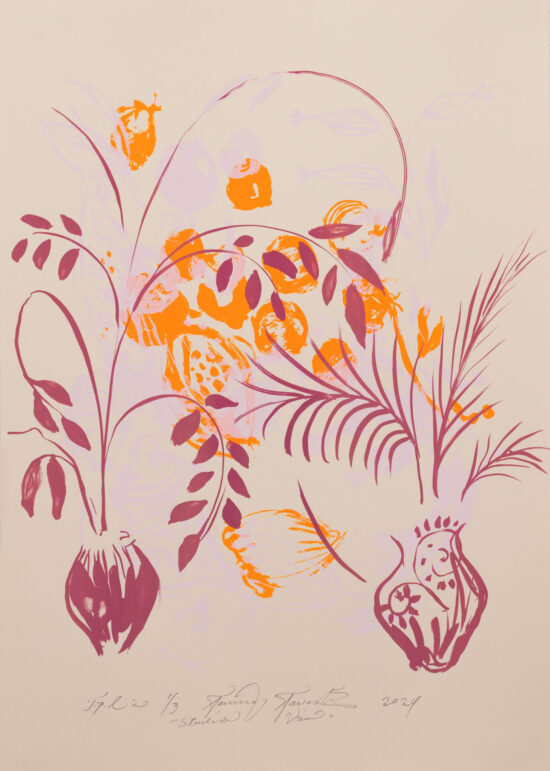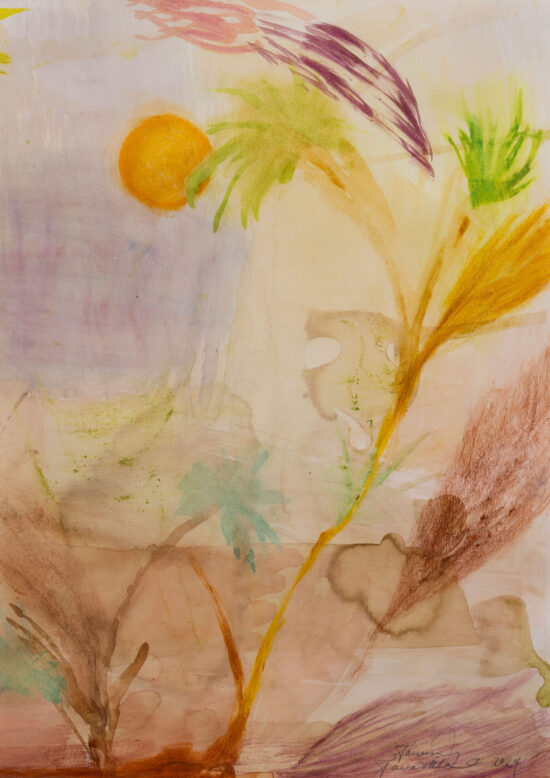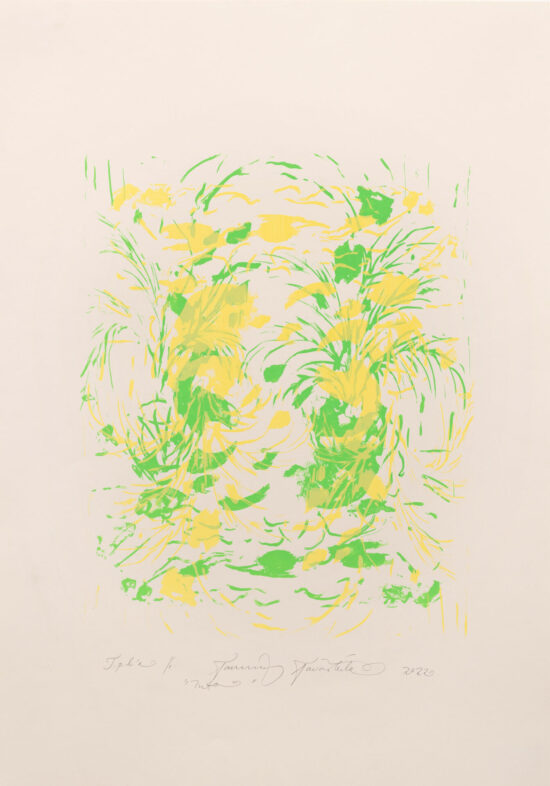Lokal Creators / Fanny Tavastila
Fanny Tavastila is a painter who lives and works in Helsinki. Tavastila’s work draws upon a nuanced spectrum of emotions. She builds her paintings slowly, layer upon layer: they are an intuitive and multifaceted examination of the relationship between the visible and the hidden, the everyday and elegiac, the figurative and abstract. A selection of her works are part of Lokal’s autumn group exhibition Kompott (6.10.–18.11.2023), alongside others which can be found as part of our Online Gallery sortiment. We visited her studio at the Cable Factory one dark November afternoon to get a closer look at where her works spring from.

Lokal Creators / Fanny Tavastila
Fanny Tavastila is a painter who lives and works in Helsinki. Tavastila’s work draws upon a nuanced spectrum of emotions. She builds her paintings slowly, layer upon layer: they are an intuitive and multifaceted examination of the relationship between the visible and the hidden, the everyday and elegiac, the figurative and abstract. A selection of her works are part of Lokal’s autumn group exhibition Kompott (6.10.–18.11.2023), alongside others which can be found as part of our Online Gallery sortiment. We visited her studio at the Cable Factory one dark November afternoon to get a closer look at where her works spring from.

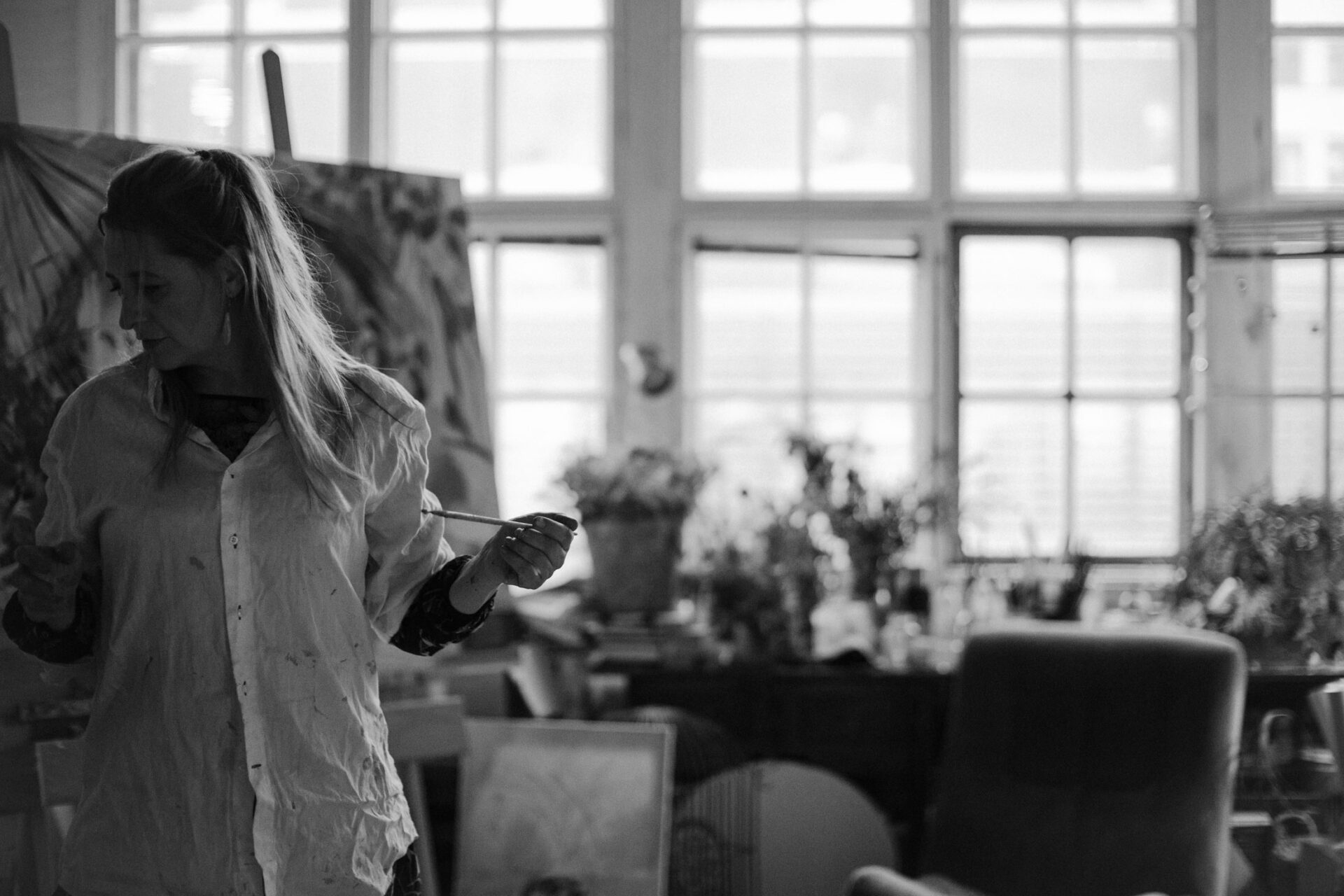
Lokal: What are some of the things that inspire your creative process?
Fanny Tavastila: “Really it is the everyday that I draw inspiration from – sometimes it feels that it can be almost anything that starts the process of a new work. A play of light and shadow on my way to work, a discussion with friends, colours meeting in an unexpected way, a memory. Music and literature are a big part of my life, and a lot of my inspiration comes from a vast range of music, lyrics and novels. I find words truly intriguing, but at the same time very hard to use to describe something exactly. Sometimes I like to borrow some words from lyrics and literature to name a work, and sometimes I change the words or play with them just a little, but the origin of the words always stays clear and important to me – they become part of the painting. I think there must be a reason why I have chosen a wordless profession and way of expressing myself. Conveying emotions demands time and presence. In painting you move slower, you can add and take away, until you finally reach a point when you think “Yes, I think this is what I want to say”. For me this can take years.”
L: What are some important principles in your work and your approach to your practice?
F.T.: “I think the most important thing for me when I approach my work, in whatever medium and material it might be, is curiosity. To have a certain open mind towards your surrounding leads you forward. This also applies to how I approach my work. To be curious about what is going to happen next, in the moment, on the canvas and in life. Curiosity leads you to ask questions, and you need to be brave enough to risk making mistakes in trying to answer those questions. Through openness you will find a way forward. To make, to try, to dream and to be bold in that sense. Boldness, in not being afraid of failing, contains enormous power. Also the physical act of painting is very important to me in every aspect of my practice. I move a lot when I paint, walking back and forth, viewing the work from different angles. Through movement a certain rhythm is formed, and through rhythm composition is approached. I like to think that in that sense my background in music will always live inside of me.”
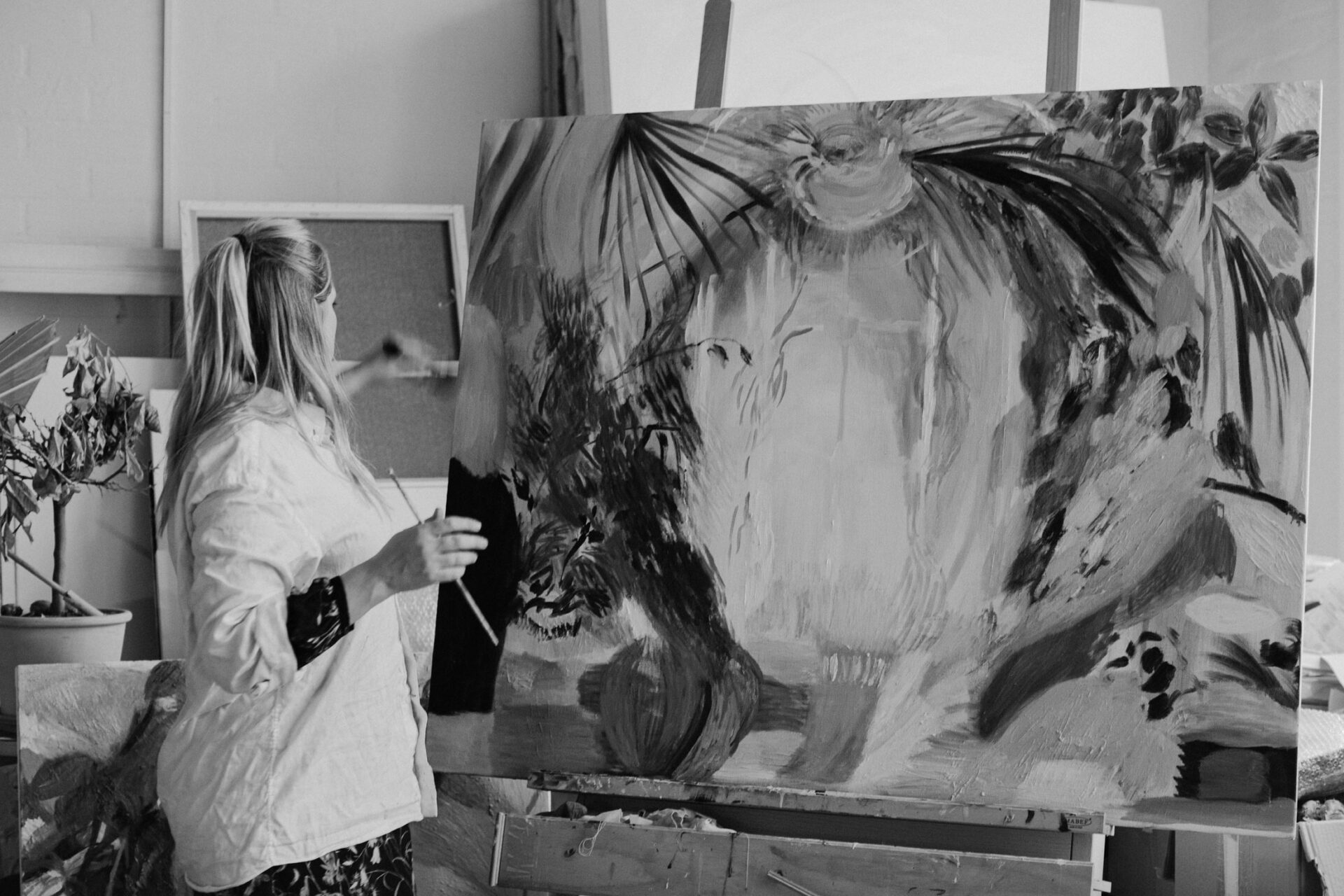
L: What brought you to fine art painting? What significance do particular places, colours and scents have in your pieces?
F.T.: “My background is in music, and it will always be a big part of my life. When I work, I tend to listen to the same music over and over again, always finding new nuances, and many of the titles of my works have an origin in lyrics and literature. I’m interested in all the contrasts that is life, and I am constantly trying to study these and strive to find ways in which to make them live side by side on canvas or a paper. How do feelings like happiness and sorrow, emptiness and richness, or very thin and thick structured paint, manage to exist together without any of these becoming dominant or pushing something else away? I think these elements also apply to the big questions in life. How to live with all of this, all the contrasts and the constant mix of thoughts and emotions, and simultaneously strive for both depth and simplicity? And maybe ultimately balance.”
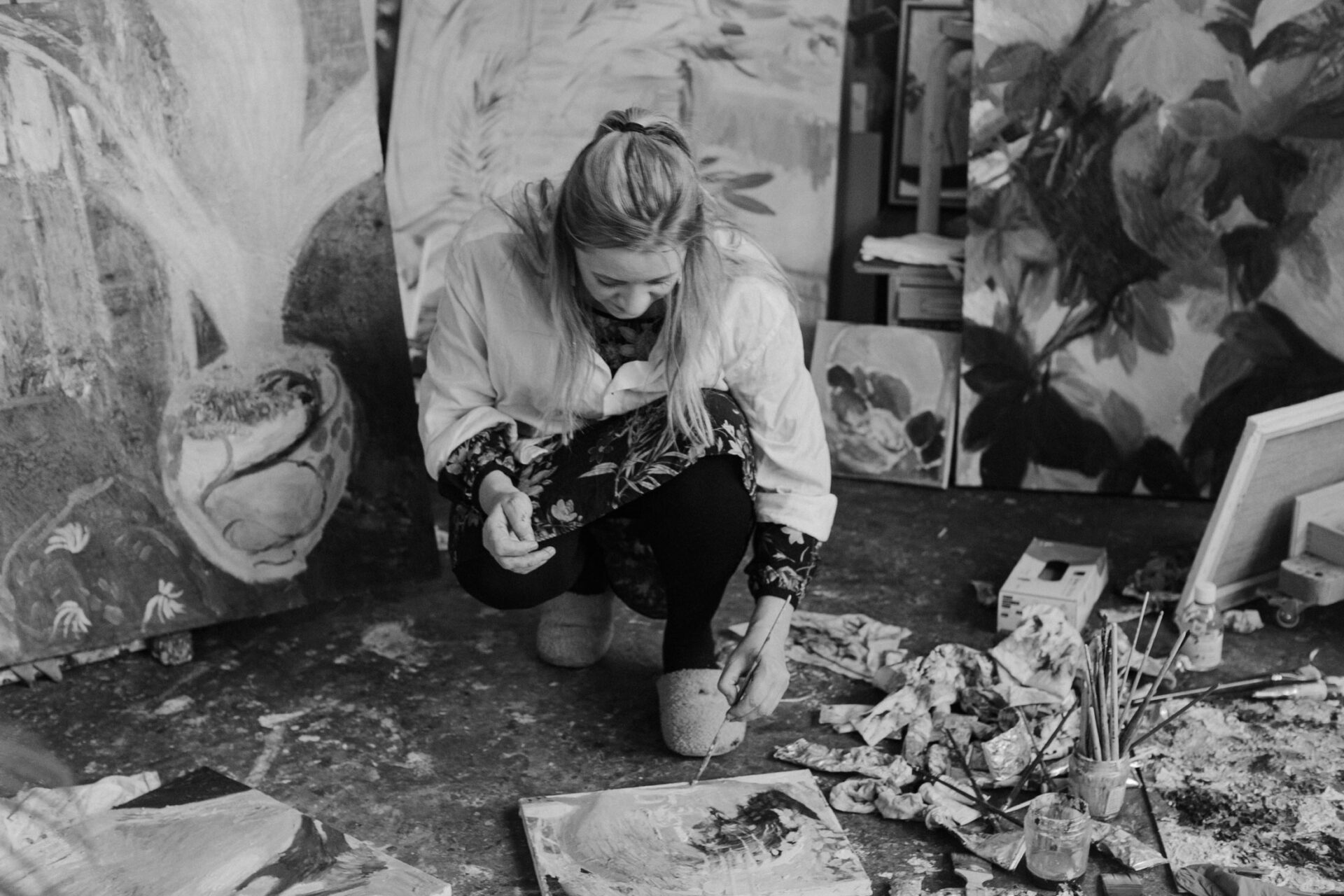
“Nature is also a huge source of inspiration to me, and I find the everlasting balance between the structured and the organic truly interesting to study. Ever since I was a child I have found the Winter Garden to be a magical place to travel in time, in fantasy and in the ever-changing life of plants and nature within a certain space. Many years ago I found a series of photographs of abandoned winter gardens and I am fascinated by those contrasts in life. I find it deeply intriguing and inspiring to examine how the organic and the structured meet, how these elements coexist and how, when left alone, the organic forms – life – always seem to find a path despite all the structures or obstacles and difficulties on their way.”
“I always have flowers in the studio, and I love both the different scents and colours they enrich the studio with. I work intuitively, building my works slowly layer upon layer, and whereas I very rarely use visual images, pictures or sketches when I approach my work, I do like to have meaningful objects, books, fruits, things I have collected since I was a child in the studio, and sometimes they, or a hint of them, find their way onto the canvas. By meaningful I don’t mean it by any universal standard, but meaningful to me because of what they represent: a shared moment with someone, a precious memory, a shell or a stone from a trip that will bring me back to that place immediately. I sometimes think that my studio also is built up in layers of memories and traces of moments, time and experiences. Much like in life itself, I find it important to be able to show these traces, not to erase them or try to change them. The same applies to my way of painting.”

Shop: Fanny Tavastila’s Works
-
480,00 €
-
480,00 €
-
360,00 €
-
450,00 €
-
2 600,00 €
-
2 700,00 €

